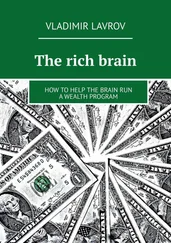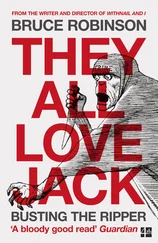Bruce Hood - The Domesticated Brain - A Pelican Introduction (Pelican Books)
Здесь есть возможность читать онлайн «Bruce Hood - The Domesticated Brain - A Pelican Introduction (Pelican Books)» весь текст электронной книги совершенно бесплатно (целиком полную версию без сокращений). В некоторых случаях можно слушать аудио, скачать через торрент в формате fb2 и присутствует краткое содержание. Год выпуска: 2014, ISBN: 2014, Издательство: Penguin Books Ltd, Жанр: Старинная литература, на английском языке. Описание произведения, (предисловие) а так же отзывы посетителей доступны на портале библиотеки ЛибКат.
- Название:The Domesticated Brain: A Pelican Introduction (Pelican Books)
- Автор:
- Издательство:Penguin Books Ltd
- Жанр:
- Год:2014
- ISBN:9780141974873
- Рейтинг книги:4 / 5. Голосов: 1
-
Избранное:Добавить в избранное
- Отзывы:
-
Ваша оценка:
- 80
- 1
- 2
- 3
- 4
- 5
The Domesticated Brain: A Pelican Introduction (Pelican Books): краткое содержание, описание и аннотация
Предлагаем к чтению аннотацию, описание, краткое содержание или предисловие (зависит от того, что написал сам автор книги «The Domesticated Brain: A Pelican Introduction (Pelican Books)»). Если вы не нашли необходимую информацию о книге — напишите в комментариях, мы постараемся отыскать её.
The Domesticated Brain: A Pelican Introduction (Pelican Books) — читать онлайн бесплатно полную книгу (весь текст) целиком
Ниже представлен текст книги, разбитый по страницам. Система сохранения места последней прочитанной страницы, позволяет с удобством читать онлайн бесплатно книгу «The Domesticated Brain: A Pelican Introduction (Pelican Books)», без необходимости каждый раз заново искать на чём Вы остановились. Поставьте закладку, и сможете в любой момент перейти на страницу, на которой закончили чтение.
Интервал:
Закладка:
Licking rats
What could be worse than licking a rat? For many people, rats are disgusting abhorrent pests associated with poverty, disease and death. This is rather unfair, as the female rat is an intelligent and social animal with a strong maternal instinct. When she is rearing her pups in the nest, the female rat will invest time licking and grooming her brood like an attentive mother. Some mother rats are much more conscientious, with very high rates of licking, whereas others are less so – a trait these mothers share with all their sisters. 45
What is remarkable is that if you take female pups from a low-licking mother and have them raised in the litter of a high-licking mother, they will acquire this attentive trait. Likewise, if you cross-foster in the opposite direction, you get the opposite effect. 46Is this rat example simply a case of learning how to raise your pups? There is more to it than that. Grooming and licking appears to regulate the baby rat’s response to stress. Those mothers with a high licking rate produce offspring who cope much better with stress than those from a low-licking mother. They also grow up into more resilient adult rats and, if female, pass this behavioural trait on to the next generation. 47They are better adapted to reproduce.
You can even generate this effect if rat pups are reared by humans and given different levels of handling during the early days. This activity changes the baby rats’ HPA response by altering their reactivity to stress. The grooming and licking releases the ‘feel-good’ neurotransmitter serotonin that regulates the gene that controls for GR in the hippocampus. In contrast, this gene is switched off in the under-stimulated pups, whereas it is almost never methylated in the pups of high-licking grooming mothers. With higher levels of GR expressed in the hippocampus, the rat is better able to regulate the HPA effectively. Even though DNA methylation patterns tend to be stable, if you cross-foster the pups of high- and low-licking mothers during the critical period, you can reverse the methylation of the gene in the hippocampus. In short, the early grooming experience is turning the genes on or off. 48
This may be all well and good for rats, but what of humans? Is there any evidence of biological embedding of early experiences later in life? Post-mortem examination of suicide victims revealed that GR expression in the hippocampus was reduced in those with a history of early abuse compared to those without this childhood trauma. 49What makes this finding all the more incredible is that it was not the stress of events that ultimately led them to take their own lives that produced this genetic difference, but rather events during their childhood that were responsible for silencing the genes.
It should be noted that there is not just one gene responsible and there are a multitude of different types of stress that affect individuals differently. In a recent study 50of teenagers whose parents had reported stress during their child’s upbringing, methylation of environmental stressor genes was investigated. The effects of the mother’s stress were only evident if that stress had occurred when the child was still an infant. Fathers also produced methylation in stress-related genes but only when the child was older, during the preschool years. More intriguing was the finding that this effect was restricted to the girls in the study. It has been reported for some time that absent or deadbeat fathers have a greater influence on their daughters than their sons, but this study is some of the first evidence to point the finger of suspicion at epigenetics.
Warrior genes
On 16 October 2006, Bradley Waldroup sat in his truck drinking heavily and reading the Bible. He was waiting for his estranged wife to arrive with their four kids for the weekend. When his wife, Penny, turned up with her friend Leslie Bradshaw, a fight broke out and Waldroup went berserk. He shot the friend eight times and then chased after his wife before hacking her to death with a machete. It was one of the worst, most bloody crime scenes that Tennessee police officers had ever dealt with. What makes this horrific crime stand out, apart from its sheer brutality, was that it was one of the first cases where defence lawyers successfully argued that Waldroup should not be given the ultimate punishment of the death sentence because of his genetic make-up. They argued that Bradley Waldroup had a biological disposition towards extreme violence because he carried a warrior gene .
This gene was discovered in the Netherlands in 1993 by a geneticist, Hans Brunner, who had been approached by a group of Dutch women who were concerned that the males in their family were prone to violent outbursts and criminal activity including arson, attempted rape and murder. 51They wanted to know if there was some biological explanation. Brunner soon found that they all possessed a variant of the monoamine oxidase A, or MAOA gene located on the X chromosome. In the following years, evidence mounted to support the link between patterns of aggression and low-activity MAOA. The condition would have remained known as the rather lame ‘Brunner Syndrome’ if it had not been for the columnist Ann Gibbons, who christened it the ‘warrior gene’. 52The emotive name is a bit of a misnomer as it is more of a lazy gene because it fails to do its main job, which is to break down the activity of neurotransmitters.
With the discovery of the warrior gene, soon everyone was looking for this biological marker in the underclass of society. Male gang members were more likely to have the warrior gene and four times more likely to carry knives. In one particularly inflammatory report 53based on a very small sample of males, New Zealand’s indigenous Maoris, famous for their warrior past, were found to have the gene. Not surprisingly, this report created a public outcry.
One of the problems with these sorts of studies is that they relied on self-report questionnaires, which are often inaccurate. One ingenious study 54tested the link between the warrior gene and aggressive behaviour by getting males to play an online game where they could dish out punishment in the form of administering chilli sauce to the other anonymous player. In fact, they were playing against a computer that was rigged to deliver a win to itself despite the best efforts of the male participants. Those with the low-activity MAOA gene wanted revenge and were significantly more likely to deal out punishments in retribution.
The warrior gene may be linked to aggressive behaviour, but as Ed Yong, the science writer, puts it, ‘The MAOA gene can certainly influence our behaviour, but it is no puppet-master.’ 55One of the main difficulties in explaining violent behaviour like that of Bradley Waldroup is that around one in three individuals of European descent carry this gene, but the murder rate in this population is far less. Why don’t the rest of us with the gene go on a bloody rampage?
The answer could come from epigenetics. Genes operate in environments. Individuals are more likely to develop antisocial problems if they carry the low-activity MAOA-L and were abused as children. Researchers studied over 440 New Zealand males with the low-activity MAOA gene and discovered that over eight out of ten males who had the deficit gene went on to develop antisocial behaviours, but only if they had been raised in an environment where they were maltreated as children. 56Only two out of ten males with the same abnormality developed antisocial adult behaviour if they had been raised in an environment with little maltreatment. This explains why not all victims of maltreatment go on to victimize others. It is the environment that appears to play a crucial role in triggering whether these individuals become antisocial.
Читать дальшеИнтервал:
Закладка:
Похожие книги на «The Domesticated Brain: A Pelican Introduction (Pelican Books)»
Представляем Вашему вниманию похожие книги на «The Domesticated Brain: A Pelican Introduction (Pelican Books)» списком для выбора. Мы отобрали схожую по названию и смыслу литературу в надежде предоставить читателям больше вариантов отыскать новые, интересные, ещё непрочитанные произведения.
Обсуждение, отзывы о книге «The Domesticated Brain: A Pelican Introduction (Pelican Books)» и просто собственные мнения читателей. Оставьте ваши комментарии, напишите, что Вы думаете о произведении, его смысле или главных героях. Укажите что конкретно понравилось, а что нет, и почему Вы так считаете.











